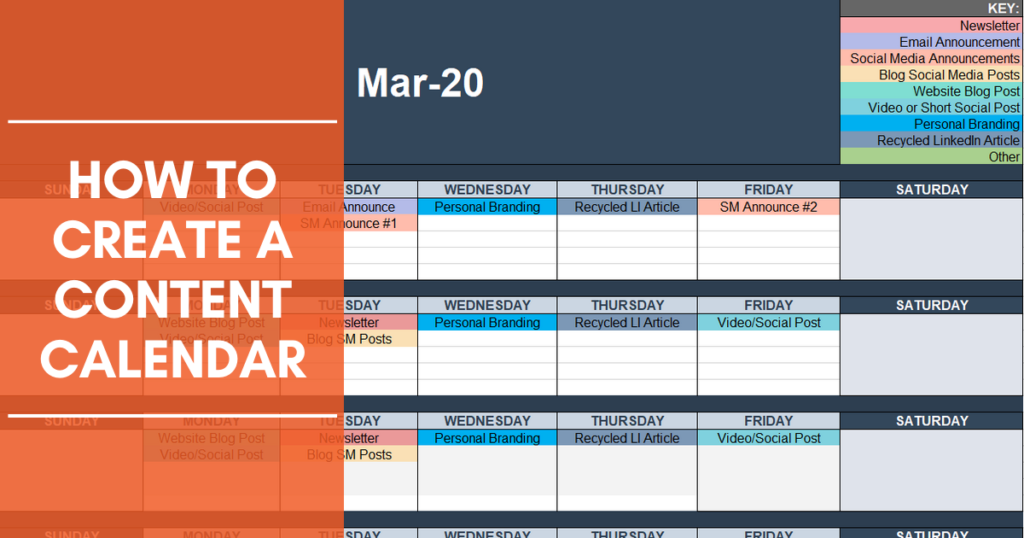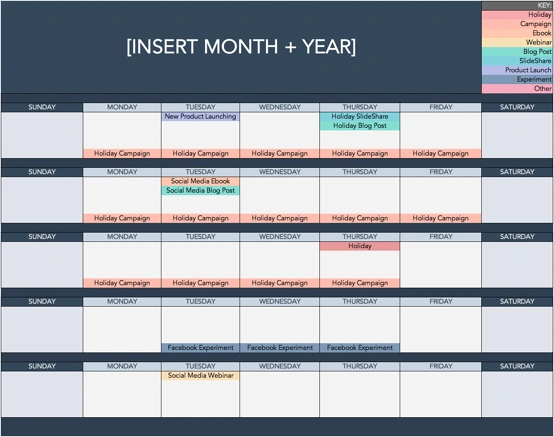How to Create a Content Calendar for Social Media
A well-organized content calendar is a cornerstone of effective social media marketing, ensuring consistency, relevancy, and strategic planning in your digital presence. Whether you’re managing social media for a business, brand, or personal profile, a content calendar streamlines your efforts, maximizes engagement, and enhances overall effectiveness. Here’s a comprehensive guide on how to create and optimize a content calendar for social media that aligns with your goals and engages your audience.
1. Define Your Goals and Audience
Before diving into content creation, clarify your objectives for social media marketing. Are you aiming to increase brand awareness, drive website traffic, generate leads, or boost engagement? Understanding your goals helps shape the type of content you’ll create and the platforms you’ll prioritize. Define your target audience—demographics, interests, behaviors—to tailor content that resonates with their preferences and needs.
2. Choose Your Social Media Platforms
Select the social media platforms that best align with your target audience and business objectives. Consider platforms like Facebook, Instagram, Twitter, LinkedIn, TikTok, or Pinterest based on their demographics, content formats, and engagement metrics. Each platform has its unique audience and content style, so tailor your content calendar accordingly to optimize reach and engagement across selected channels.
3. Conduct Content Research and Ideation
Research trending topics, industry news, and keywords relevant to your niche using tools like Google Trends, BuzzSumo, or industry publications. Brainstorm content ideas that align with your brand’s values, products/services, and audience interests. Consider seasonal trends, holidays, and events that offer opportunities for themed content or campaigns. Incorporate a mix of content types—educational, entertaining, promotional—to keep your audience engaged.
4. Establish Content Themes and Categories
Organize your content ideas into themes or categories that align with your brand’s messaging and marketing objectives. For instance, themes could revolve around product features, customer testimonials, industry insights, behind-the-scenes glimpses, user-generated content (UGC), or tips and tutorials. Categorizing content ensures variety and balance in your social media posts while reinforcing key messages and maintaining audience interest.
5. Create a Content Calendar Template
Develop a structured content calendar template that outlines your posting schedule, content types, themes, and key messaging for each platform. Use a spreadsheet, Google Calendar, or dedicated social media management tools like Hootsuite, Buffer, or Later to organize and schedule posts in advance. Include columns for date and time of posting, platform-specific content details, captions, hashtags, and links to multimedia assets (images, videos).
6. Plan Content Frequency and Timing
Determine the optimal frequency and timing for posting content on each social media platform. Consider platform algorithms, audience behavior patterns (e.g., peak engagement times), and recommended posting frequencies for maximum visibility and engagement. Experiment with posting schedules and analyze performance metrics to refine your content calendar over time. Consistency in posting maintains audience engagement and strengthens brand presence.
7. Incorporate Visual and Interactive Content
Enhance engagement with visual content—images, videos, infographics—that capture attention and convey your brand’s message effectively. Use high-quality visuals that align with your brand identity and resonate with your audience. Incorporate interactive content such as polls, quizzes, and live videos to encourage audience participation and foster community interaction. Visual and interactive content boosts engagement metrics and enhances overall content performance.
8. Include Campaigns and Promotions
Integrate campaigns, promotions, and product launches into your content calendar to align with marketing initiatives and business goals. Plan campaign-specific content, countdown posts, teaser videos, and promotional offers to build anticipation and drive conversions. Coordinate campaign timelines with your content calendar to maintain consistency and amplify messaging across social media platforms.
9. Monitor and Analyze Performance
Regularly monitor the performance of your social media posts using analytics tools provided by each platform or third-party analytics software. Track metrics such as reach, impressions, engagement (likes, comments, shares), click-through rates (CTR), and conversion rates. Analyze content performance to identify top-performing posts, understand audience preferences, and optimize future content strategies. Use insights to refine your content calendar, adjust posting schedules, and capitalize on content trends.
10. Adapt and Evolve Your Strategy
Stay agile and adaptable by continuously evaluating your content calendar’s effectiveness and evolving social media trends. Stay updated on platform algorithm changes, audience feedback, and industry developments to refine your content strategy proactively. Experiment with new content formats, engage with audience feedback, and incorporate learnings into your future content planning. Flexibility and responsiveness ensure your content calendar remains dynamic, relevant, and aligned with evolving audience expectations.
By creating a structured and strategic content calendar for social media, you can streamline your content creation process, maintain consistency, and drive engagement effectively. Tailor content to resonate with your audience, leverage analytics to optimize performance, and adapt your strategy to capitalize on emerging opportunities. A well-executed content calendar not only enhances brand visibility but also fosters meaningful connections with your audience, driving sustained growth and success in social media marketing.



